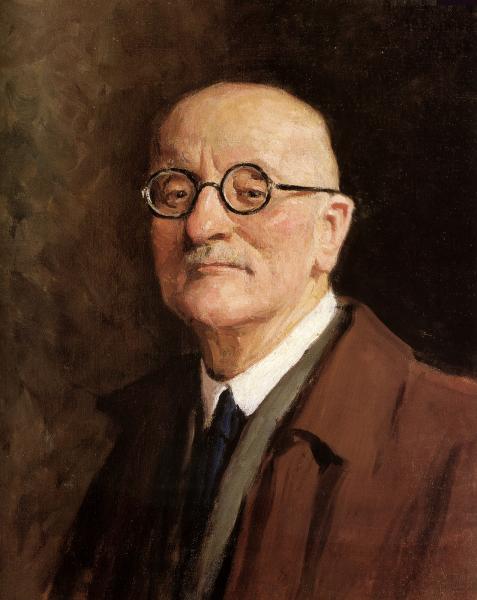The artist is a grabar

In the 1930s, Grabar returned to painting after a long break associated with its multilateral organizational, teaching and social activities. Wrote a number of portraits of artists of art, culture and science, which were distinguished by great similarity, energetic performance and psychological accuracy of characteristics. Among these works and Self -portrait, written during the war years. It naturally combines a compositional solution with dry traditional painting and restrained color. The universality of the individual, the hidden energy and liveliness of character fill the image and are transmitted with the light irony of the author to the “model”. (A. N.).
Russian portrait. XX century: St. Petersburg, 2001. WITH. 262.
Grabar Igor Emmanuilovich (1871–1960) – painter; art historian, art critic, museum worker, restorer, teacher.
Born in Budapest. He graduated from legal and philological faculties of St. Petersburg University (1889–1896). He studied at the Higher Art School at the Imperial Academy of Arts (1894–1896) U and. E. Repina, at school a. Ashbe (1896–1898) in Munich. Throughout 1896-1900 he studied world art in Europe. In Italy, he was shocked by the creations of the masters of the Renaissance, and in Paris – the works of impressionists and post -impressionists. In 1900 he returns to Russia. In the suburbs, given the achievements of the French impressionists, writes in the open air the landscapes “February Izur”, “March Snow” (1904) and still life “chrysanthemums” (1905), “Unbatient table” (1907).
Member of the World of Art (1901, 1910), the Union of Russian Artists (1903), a lifelong member of the autumn salon in Paris (1906). Member of the exhibitions since 1898: “World of Art” (1902–1906, 1912–1922), SRH (1903–1909), “Moscow painters” (1925); International in Dusseldorf (1904), Venice (1907, 1924), Rome (1911), Malmo (1914). He taught at the joint school of Ashbe – Grabar (1898–1901) in Munich.
1910–1923 – the period of fascination with architecture, history of art, museum activities, and the protection of monuments. Carried out the first “History of Russian Art” in six volumes (1909–1916), wrote the most important sections for it, published monographs about. A. Serov and and. AND. Levitan. In 1913–1925 he headed the Tretyakov Gallery, significantly changing the principles of museum work. After the revolution, I did a lot to protect the monuments of culture from destruction. In 1918, on his initiative, state central artistic restoration workshops were created (1918–1930, director). From 1924 until the end of the 1940s he was again engaged in painting, especially fond of portrait.